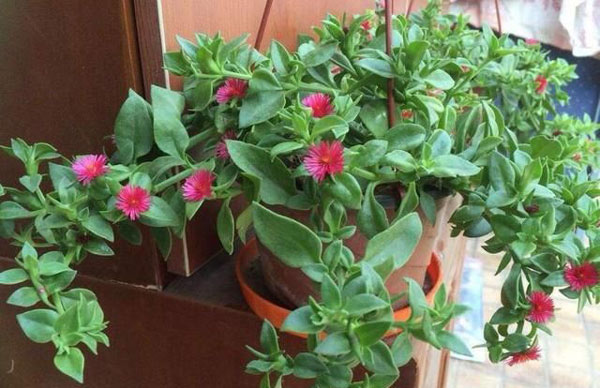How to Care for Baby Sun Rose (Aptenia Cordifolia)
Written by Maggie
Dec 23 2021
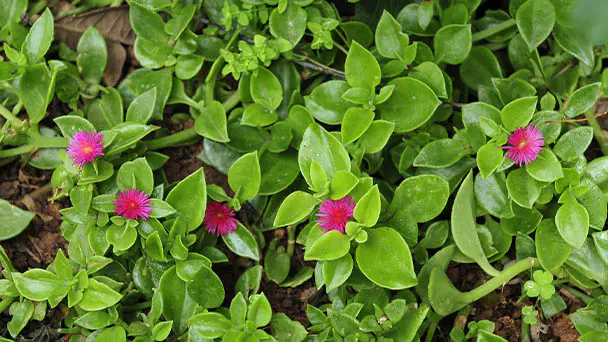
Baby sun rose (Mesembryanthemum Cordifolium, Aptenia Cordifolia) is an evergreen herb, which is very different from the common Chlorophyte. The ornamental value of Baby sun rose is higher and the decorative effect is better and prominent. Baby Sun Rose can tolerate high rainfall and extreme drought, so they can perform well even with irregular watering. Even so, for best performance, water your baby sun rose as regularly as you would cacti or succulents. Here are the tips about how to grow and care for baby sun rose succulent.
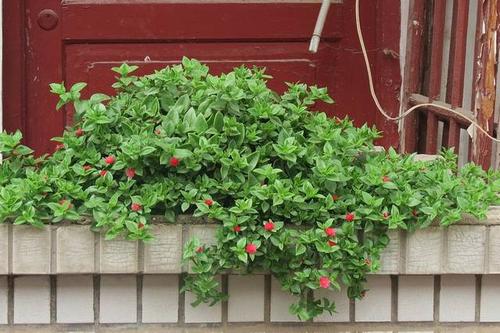
Baby Sun Rose Quick Info
| Botanical/Scientific Name | Mesembryanthemum Cordifolium |
| Common Name | Baby Sun Rose, Aptenia Cordifolia |
| Uses | It provides very good erosion control |
| Origin | South Africa |
| Light Care | Need strong light;Full to partial sun |
| Soil Care | Well-drained |
| Temperature Care | It is hardy to twenty-three degrees Fahrenheit |
| Humidity Care | Moderate humidity |
| Watering | Typical watering |
| Pruning Care | Regular trimming |
| Fertilizer Care | Fertilize twice a year |
| Propagation | To be able to propagate from the mother plant |
| Toxic | Non-toxic to dogs or cats |
| Flower Color | Red |
Where to Grow Baby Sun Rose
Baby Sun Rose Succulents need strong light. When planting this succulent type in a garden, make sure it gets sunlight. Full to partial sun is the best for its growth. It is better to grow outdoor rather than indoor.
This type of succulent prefers a warm climate. Baby Sun Rose can survive at zone 8a-10b which is around -12.2°C (10°F). If you live in a cold area, it is better to plant it in an indoor environment. As long as it gets enough sunlight, the Baby Sun Rose will grow happily. When selecting what pot to use be sure that you understand the difference between the material used.
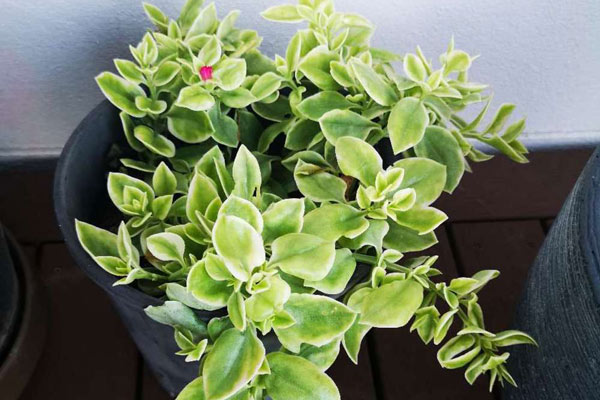
How to Propagate Baby Sun Rose Propagation
Baby Sun Rose Propagation from Cuttings
We usually use baby sun rose cutting propagation. How can baby sun rose cut. We propagate baby sun rose by cutting. We need to cut cuttings from robust plants.We can intercept baby sun rose cuttings. The best length is about 12cm. After that, we need to place the branches in a cool and ventilated place to dry. After the branches are dried, they can be soaked and disinfected in potassium permanganate solution. The soil of baby sun rose cutting propagation can be mixed with humus soil, garden soil and river sand, and the branches can be directly inserted into the soil during cutting.
After the baby sun rose cutting propagation is completed, we'd better place the plants in a semi-shady and ventilated environment for breeding. During the breeding process, we should ensure that the air humidity meets the standard, so that the branches can take root in one to two months. Baby sun rose has strong adaptability. Cutting can be carried out in spring, summer and autumn, and the growth and survival rate of cutting branches in spring and autumn are the highest.
Read More: How to Propagate Baby Sun Rose from Cuttings
Baby Sun Rose Propagation from Seeds
Baby Sun Rose is a slow grower so even if it can be propagated by its seeds, this method is not recommended. To propagate from the seeds, plant the seeds in a well-draining soil mixture. This method can be used outdoors. In cooler areas, indoor propagating is recommended.. For baby sun rose sowing propagation, we need to select baby sun rose seeds with full particles, bright color and no damage, and soak them in warm water at 28 ~ 30 ℃ to help promote buds and seedlings. The baby sun rose, which has successfully undergone the budding operation, has the advantage of high survival rate and rapid growth in the breeding process. The sowing interval of baby sun rose seeds shall be properly controlled and not too dense.
Aptenia Cordifolia Propagation with Offsets
Aptenia Cordifolia propagates from offsets. To be able to propagate from the mother plant, you might wait several years for the main plant to produce an offset. To start this process, use a sharp knife and remove an offset from the main plant. When you remove the offset, clean the extra soil from it. Before replanting, wait for a few days to allow it to callous. Use well-draining soil for your new succulent plant. Don't forget to water when the soil dries out.
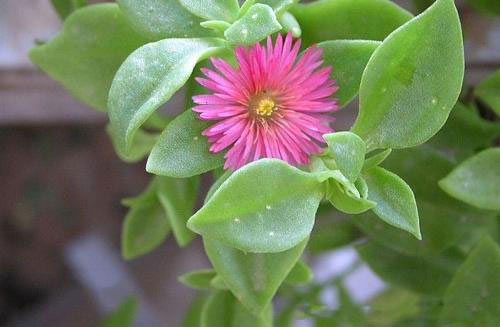
How to Care for Baby Sun Rose
Watering Baby Sun Rose
Although it is a succulent, Aptenia Cordifolia needs much more water than most. In this aspect, Baby sun rose must be treated as a normal plant, not allowing the substrate to dry out completely between waterings. That is not to say that aptenia Cordifoliat will not tolerate drought, but it will have smaller, yellowish leaves and will grow much less. You just have to control the watering a little more in winter, when it goes into dormancy. Pay attention to the dryness and wetness of flower soil. Take the dry and wet of soil as the standard of watering. When the soil of baby sun rose becomes dry, water it. At the same time, we can also water its branches and leaves in the form of spraying.Soil for Baby Sun Rose
The soil for cultivating baby sun rose needs soil with good air permeability and drainage. We can also choose sandy loam or a variety of soil mixing. We can also add some stones to expand the soil gap and enhance the effect.The potting soil of baby sun rose is slightly acidic. We can use the potting culture soil prepared from peat soil, sand and vermiculite, and add an appropriate amount of calcium superphosphate. 8 parts of rotten leaf soil and 2 parts of coarse sand can also be used
Light for Baby Sun Rose
Baby sun rose doesn't like direct exposure to strong light, so we also carefully choose its illumination time. We should try to keep baby sun rose away from noon, especially in hot summer. Shelter measures can be taken if possible. Baby Sun Rose can grow in partial shade in warmer regions, but avoid full shade because flowers need full sun to flourish. Nevertheless, the Aptenia cordifolia plant and the flowers must be protected from direct sunlight.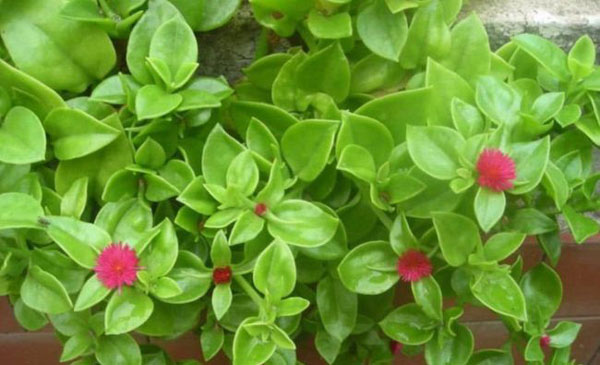
Baby Sun Rose Temperature Care
The growth temperature of baby sun rose is 18-30 ℃, the optimum temperature is about 25 ℃, and the cold resistance is poor. The overwintering temperature should generally be above 12 ℃, and it is necessary to enter the house for overwintering in winter. If we find that the redness of baby sun rose leaves is mainly caused by too low room temperature or too strong light, we should raise the room temperature in time. If the room temperature is too low, it will also cause the leaves to fall off and the branches to dry.Baby sun rose is not hardy and needs to go indoors in winter. Baby sun rose does not have strict requirements on air humidity, and the indoor air is not too dry. The suitable temperature for its growth should be about 25 ℃ and the overwintering temperature should be above 12 ℃. If we find that the leaves of baby sun rose turn red, if the light is too strong or the room temperature is too low, we should raise the room temperature in time. If the room temperature is too low, the leaves will fall off and the branches will dry. At this time, less nitrogen fertilizer should be applied to improve the intensity of indoor light and control the low room temperature, which can promote the flowering of baby sun rose. After the flowering period in winter, the residual stems that have bloomed should be cut off in time, which can save the consumption of nutrients in their body and promote the development of new branches, so as to make them bloom with more pregnant buds.
Baby Sun Rose Humidity Requirements
The basin soil for cultivating baby sun rose should always be kept wet, but do not accumulate water in the basin, especially when the ventilation on the basin is poor, so as not to cause root rot. the basin soil should be slightly dry in winter. In summer, we should often spray fog water on the leaf surface to increase the humidity of the leaf surface and the surrounding environment for its growth. Baby sun rose usually needs less fertilizer. We can apply some rotten liquid fertilizer every two weeks. It's better to be thin than thick.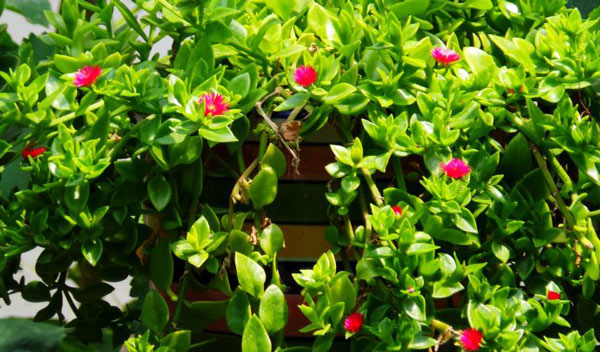
Fertilizer for Baby Sun Rose
When baby sun rose is growing vigorously, we can apply rotten organic fertilizer once every 15 ~ 20 days. After summer, we can apply more phosphorus and potassium fertilizer. For example, using 0.1% solution of potassium dihydrogen phosphate and 20 times solution of dirty water and bone water in rotten fish can be propagated in the opening of autumn flowers. When the weather is getting cooler and colder in autumn, we should gradually reduce the amount of watering and fertilization of baby sun rose. In addition to properly applying some liquid fertilizer containing a little more phosphorus before the flowering of pregnant buds, less or no fertilizer should be applied under normal circumstances. Under the conditions of appropriate room temperature, the flowering period of the baby sun rose will focus on December to February of the next year. At this time, less nitrogen fertilizer should be applied.Baby Sun Rose Pruning
Baby sun rose pruning needs to choose the right time. Baby sun rose grows vigorously in spring and summer. At this time, pruning can help plants recover their growth as soon as possible, so pruning can be carried out in spring and summer every year. Before pruning, observe the weather to avoid pruning in rainy days.Baby sun rose pruning also needs to select appropriate tools. It is best to select scissors with sharp edges for pruning, instead of using tools with rusty or passivated edges to prune baby sun rose, so as to avoid damaging the stem of the plant during pruning, resulting in the failure of baby sun rose to grow normally.
We need to adopt the correct pruning method when we are in baby sun rose pruning. First, we need to cut off the branches and leaves of the heart leaf diurnal flower that grow poorly or cannot grow normally to help the plant save nutrients. At the same time, we can also cut the branches and leaves of baby sun rose that grow too dense or too long to promote the plant to grow more lateral branches.
When we conserve baby sun rose in the later stage, we need to provide an appropriate amount of water for the plant and wet all the soil. When we provide water for baby sun rose, we'd better use mineral-rich river or lake water. At the same time, we also need to provide baby sun rose with reasonable nutrients to improve the growth rate of plants and make baby sun rose grow better.
Baby Sun Rose Repotting
We have to carry out baby sun rose repotting every 1-2 years. We should select the appropriate time to change pots. From the perspective of development habits, it is more appropriate to select spring. This is the development season of baby sun rose. The temperature and mild climate are more conducive to plant survival. Its survival rate is relatively high and its development rate is fast.Baby sun rose repotting also needs to prepare suitable cultivation soil from scratch. It is suitable to select loose and breathable sandy soil with excellent drainage and rich humus. Five parts of rotten leaf soil, three parts of hometown soil and two parts of sandy soil can be mixed to prepare a suitable cultivation soil. Properly adding inorganic fertilizer can add soil foundation fertility.
Baby sun rose likes to have excellent air permeability and drainage. Therefore, when selecting flower pots, we'd better use ceramic pots with better air permeability, and the bottom of the pot has holes for drainage. The adult plant can use a deeper flowerpot, and the seedling can use a shallower and smaller flowerpot.
We can remove the original baby sun rose from the pot, clear the soil mass in the root core and preserve the soil mass around the root. If the root has old roots and residual roots, it can be pruned and disinfected before planting from scratch. If the pot soil is relatively dry, excessive watering is required after transplanting, and the soil is wet. After the plants comply with and recover their development, they can be generally maintained.
Baby Sun Rose Pest & Disease Control
Baby sun rose has few diseases and insect pests, but during cultivation in summer, the baby sun rose is prone to anthrax due to hot and humid weather. When the plant is diseased, small spots often appear on the leaves and gradually expand to form yellowish-brown round spots. When the disease is serious, most of the leaves wither and die, and sometimes disease spots also appear on the stems. The disease can be prevented by keeping good ventilation, reducing air humidity and reducing the amount of nitrogen fertilizer.The spores of the pathogen are mostly on the leaf surface and on the back, but less. Conidia pedicels are mostly solitary, fine, unbranched. At the beginning of the disease, we can also use 50% carbendazim 500 times or 65% mancozeb 500 times. In addition, in the cultivation process, if there is a lack of calcium fertilizer. The terminal bud will be necrotic, so calcium superphosphate should be supplemented in the process of cultivation.
In addition, when purchasing baby sun rose, we should choose the one with uniform branches, lush branches and leaves and many and dense flowers. Usually, baby sun rose is hung in the air and sold. After buying, roll up the sagging branches and leaves and wrap them in newspapers or bags, otherwise, the sagging branches and flowers will be damaged and affect the viewing effect.
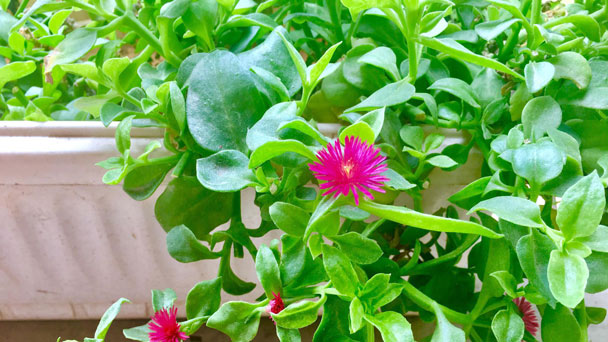
Baby Sun Rose Care FAQs
Baby Sun Rose Care for Leaves Softening
There are many reasons to cause Baby sun rose leaves to become soft. It is often strong sun shade processing, mainly accept astigmatism during curing at ordinary times. If water accumulation in the basin is serious, properly control water. Keep the soil dry and wet. If without having to deal with the metabolism, we should strengthen the ventilation, timely clean up the fallen leaves. The following are details of Baby sun rose care for leaves softening.
Frequent exposure
Baby sun rose likes to grow in sufficient light, but if it is exposed to strong light for a long time, the branches and leaves will not grow well, and the leaves will become soft and withered. It is best to pay attention to the sunshine intensity at ordinary times. When we care for Baby sun rose, it is necessary to shade under strong light in summer to avoid direct sunlight, and it is best to place it in astigmatism with sufficient sunlight.
Water
Baby sun rose like grow in the damp matrix, but also afraid of flooding. In normal times, a large amount of water in water accumulation in the basin is serious, can also lead to the blade has faded, it is also a Baby sun rose leaf has one of the reasons for what happened. They should have proper control of water, in water to keep the soil usually the best half dry and wet state.
Metabolism
Under the condition of natural growth, the lower branches and leaves of Baby sun rose will gradually become soft and yellow due to the metabolism after the plant grows into form, and will naturally fall off after a long time. When we care for Baby sun rose, there is no need to worry. This is a normal life activity phenomenon of the plant.
Temperature
Baby sun rose like growth under the ventilation and the warm climate, but in the summer heat when the word if directly on the outside, will affect the normal growth of the plant, leaf also has dropped gradually. The plant should be moved to a cool ventilated place, high temperature season shade processing is required, or to the ground water spray mist, in order to reduce the temperature of the surrounding.
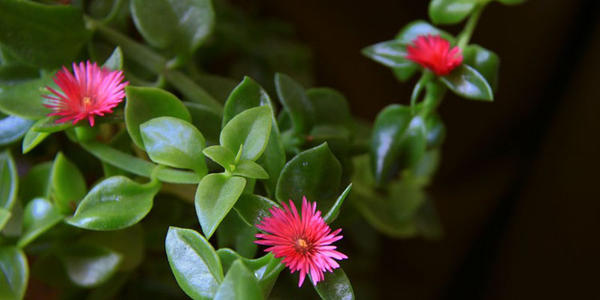
Baby Sun Rose Care For Not Blooming
Baby sun rose not blooming, we need first the loose soil, to make Baby sun rose can grow better. If improper watering fertilizer, needed timely in soil, every 2 ~ 3 days will be watered once, half a month an organic fertilizer is good. In the winter we also need to control the temperature by 5 ℃ or more. The following are details of Baby sun rose care for not blooming.
Loose soil
Baby sun rose only grows leaves but does not blossom may be caused by soil hardening. It is necessary to loosen the soil properly for Baby sun roses. It is better to loosen the soil every 1 ~ 2 months at ordinary times, and turn the pot and change the soil every two years to make the Baby sun rose to grow normally and bloom beautiful flowers during the flowering period.
Proper trim
The growth rate of Baby sun rose is relatively fast. Every time after the flowering period of Baby sun rose, it needs to be pruned in time to cut off all branches that cannot blossom and affect the beauty. When caring for Baby sun rose, the consumption of nutrients can be reduced, and the branches that can blossom can absorb nutrients in the soil, so that the leaves will grow and bloom again next year.
When we care for Baby sun rose, if the Baby sun rose lacks light, it will not blossom. Therefore, how to care for the Baby sun rose only grows leaves but does not blossom? It is necessary to transfer it to a place with sufficient sunlight in time so that the branches and leaves of the Baby sun rose can get sufficient light and promote the bright flowers of the next year.
Control the amount of water
In fact, Baby sun rose does not have a high demand for water. If it is not watered properly, it will not blossom, so it needs to replace the soil in time. Baby sun rose can be watered every 2 to 3 days at ordinary times.
Reasonable fertilization
When the nutrients of Baby sun rose are insufficient, it will not blossom, and its leaves may gradually lose color and luster, reducing the ornamental value of Baby sun rose. Generally, when we care for Baby sun rose, phosphorus and potassium fertilizer should be applied every 10 to 15 days during the growth period, and organic fertilizer should be applied every half a month during the flowering period.
Control the temperature
The flowering period of Baby sun rose is from March to September. If Baby sun rose is prone to frostbite in winter, which will lead to no flowers in the flowering period, then the temperature should be controlled at about 20℃ to gradually restore the vitality of Baby sun rose. When we care for Baby sun rose in winter every year, it is better to control the ambient temperature above 5℃ to prevent frostbite caused by too low temperatures.
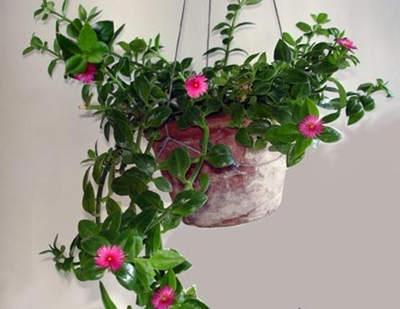
Can Baby Sun Rose Grow in water?
Cut a 2-3" long stem from the tip of each of the growing stems. Set the cut end into the pot and set Baby Sun Rose in a sunny place. As long as you water the potting soil every few days the cuttings should root. Some Aptenia Cordifolia are quite cold hardy and others are not.Is Baby Sun Rose Considered Toxic Or Poisonous?
Heartleaf Baby Sun Rose is not toxic, but the sap is mildly irritating. It's best to keep kids and pets away.Is Baby Sun Rose Plant Considered Invasive?
Red Aptenia does have quite a bit of weed potential because it spreads easily. Baby Sun Rose has been naturalized in Oregon, California, and Florida. In Florida, it is not currently considered a problem species, but it does bear watching. It’s a popular groundcover in southern Florida and could easily escape the garden setting and become a problem. In California, Heartleaf Baby Sun Rose grows very vigorously in moist areas and near wetlands. It is considered invasive. Baby Sun Rose is also considered invasive in Australia, where it has escaped from garden settings and poses threats to the coastal dune areas and native groundcovers.
Read More:
Latest Updated
- Benefits of Bugleweed - 7 Science-backed Health Benefits
- Bugleweed Dangers & Side Effects - Is It Poisonous?
- How to Plant Evergreen Trees - What You Should Know
- When to Plant Evergreens - Grow Guide for Evergreen Trees
- 12 Wonderful Evergreen Shrubs for Your Garden
- 12 Popular Evergreen Plants with Pictures for Beginners
- When And How To Prune A Lilac Bush Like a Pro
- How to Grow & Care for Lilac Vine (Hardenbergia Violacea)
- Japanese Lilac Tree (Syringa Reticulata) Care & Propagation Guide
- Shumard Oak Pros and Cons - What to Know
Popular Articles
- Winter maintenance of Antirrhinum Majus
- How to Grow Terminalia Mantaly Tree
- How to Grow and Care for Crossostephium Chinense
- How to grow Antirrhinum Majus in spring
- Peristeria Elata (Dove Orchid) Profile: Info & Care Guide
- Underwatered Snake Plant (Sansevieria Trifasciata) - Signs And How To Fix
- How to Care for Brazilian Jasmine Plant (Mandevilla Sanderi)
- How to Grow & Care for Graptopetalum Purple Delight in Summer
- Rosa Chinensis (China Rose): Plant Growing & Care Tips
- How to Care for Baby Sun Rose (Aptenia Cordifolia)
